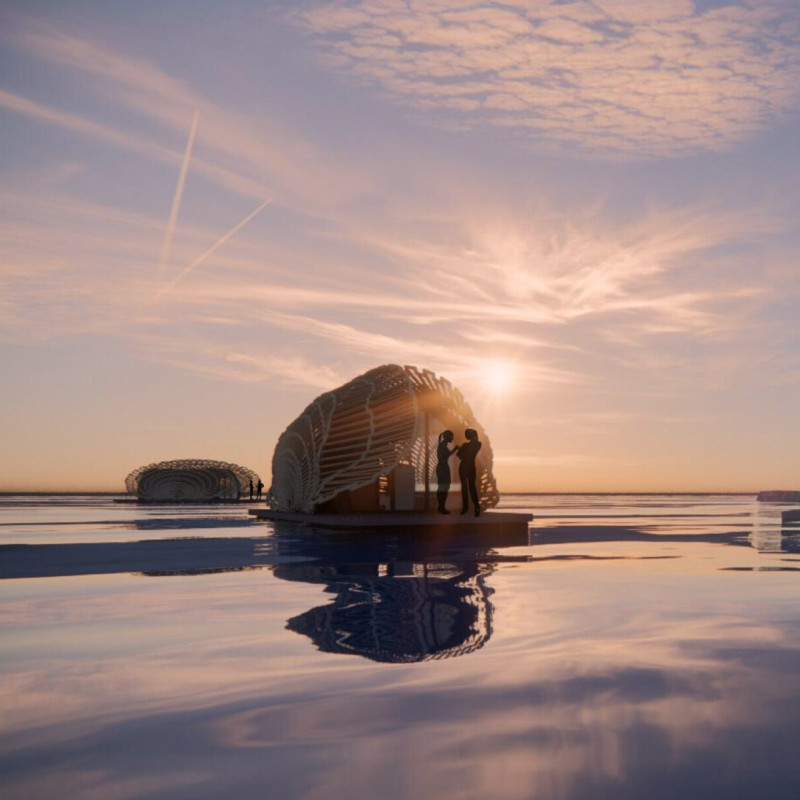5 key facts about this project
One of the central functions of this architectural endeavor is to cater to both social and functional needs, offering an environment that can be utilized for diverse activities. The layout is meticulously organized, allowing for seamless movement throughout the space, which enhances user experience. It features distinct zones that accommodate both communal and private interactions, reflecting a deep understanding of human behavior within architectural spaces. Each area is intentionally designed to promote engagement, whether through open-plan spaces that encourage collaboration or quiet nooks that offer solitude.
Visually, the project is marked by its contemporary silhouette and thoughtful material choices. The use of Portland cement concrete serves as the primary structural element, providing a robust and enduring foundation while allowing for innovative design possibilities. Complementing this are expanses of tempered glass that invite natural light into the interiors and create a visual connection between the inside and outside. This transparency is further enhanced by strategic window placements, which not only serve practical purposes but also frame picturesque views of the surrounding landscape.
The architectural design incorporates reclaimed wood, adding warmth and texture to the interiors. This material's sustainability aspect aligns with the project’s overall ethos of environmentally responsible design, echoing a growing trend within the architectural community to utilize materials that have minimal impact on the environment. The elegant use of clay brick in certain areas likewise contributes to the aesthetic, offering a tactile quality that complements the modern elements of the structure while grounding it in a sense of place.
One of the standout features of the project is its approach to integrating indoor and outdoor spaces. Thoughtfully designed courtyards and terraces provide not only recreational areas but also serve as extensions of the interior, allowing nature to permeate the architectural experience. This design choice enhances the well-being of users, fostering a sense of calm within the bustling urban environment.
In terms of unique design approaches, the project reflects a commitment to sustainability through features such as rainwater harvesting systems and green roofs, which contribute to energy efficiency and effective water management. Moreover, the incorporation of smart building technology ensures that the space adapts to the needs of its users, enhancing comfort while minimizing energy consumption.
The architectural details are marked by clean lines and minimalist aesthetics that resonate with contemporary design sensibilities. Attention is paid to the resolution of transitions between different materials, ensuring a cohesive flow throughout the spaces. Lighting fixtures are carefully selected to enhance the character of the interiors while providing practical illumination, further accentuating the project's aesthetic qualities.
This architectural project stands as a testament to thoughtful design, where each element is purposefully aligned with overarching goals of sustainability, community, and aesthetic value. Its ability to create an engaging environment while remaining functional speaks to the skill and dedication of the design team. Readers are encouraged to delve deeper into the project's presentation to explore the intricate architectural plans, detailed sections, and innovative design concepts that further illuminate the thoughtful intentions behind this remarkable architectural endeavor. Engaging with these elements allows for a deeper appreciation of the architectural ideas and strategic decisions that have shaped this project into a significant addition to its urban landscape.


























